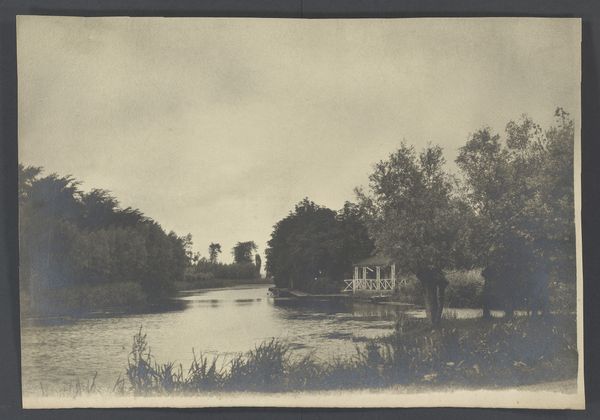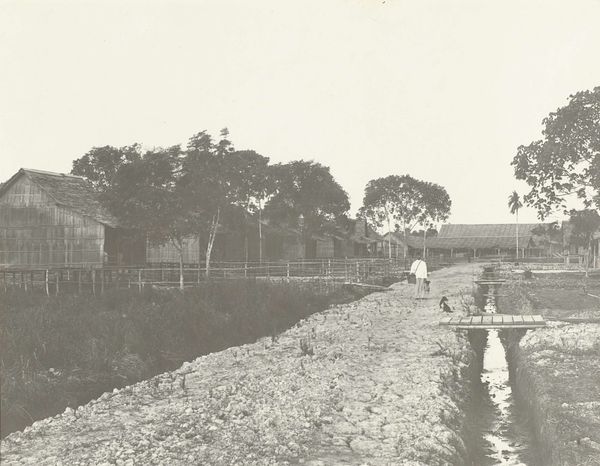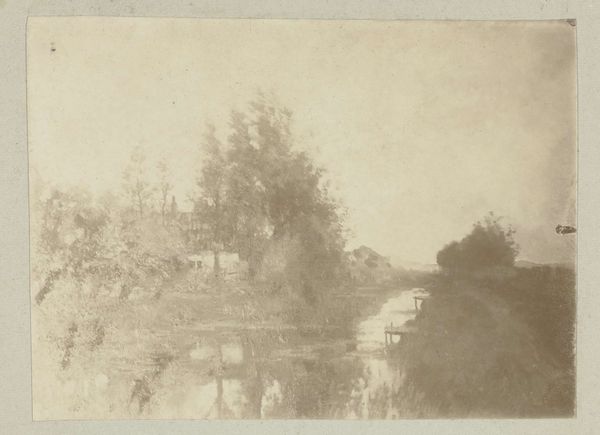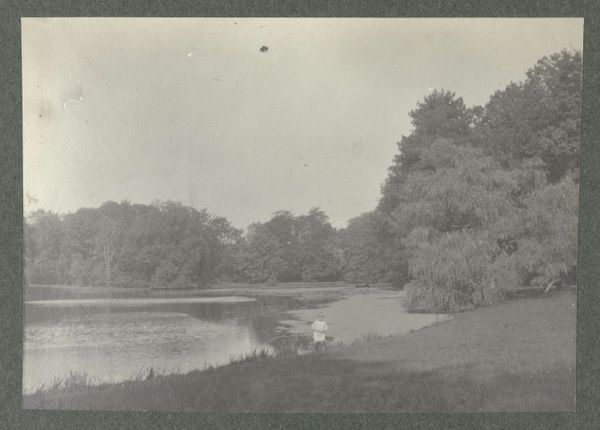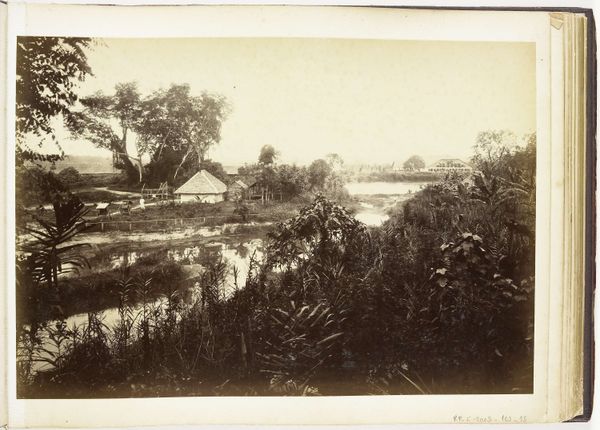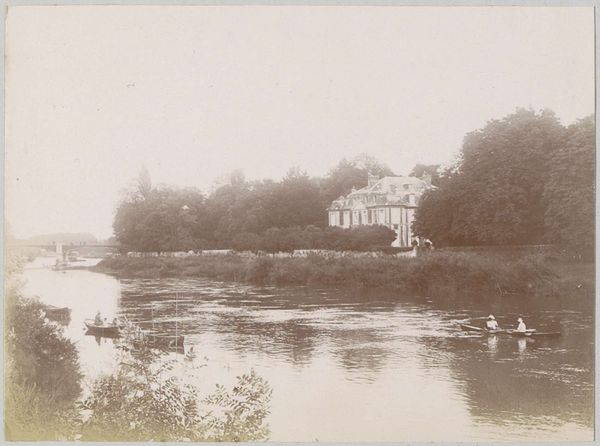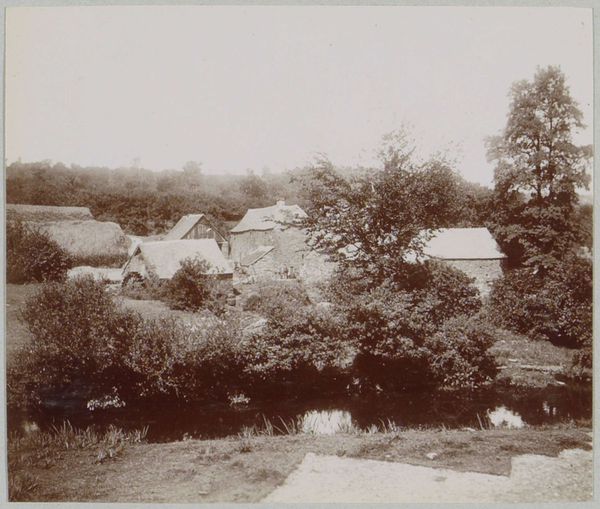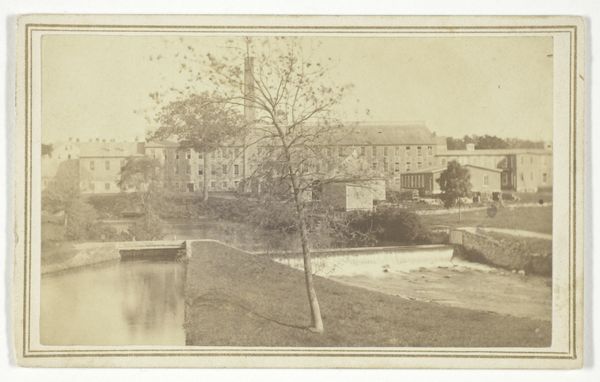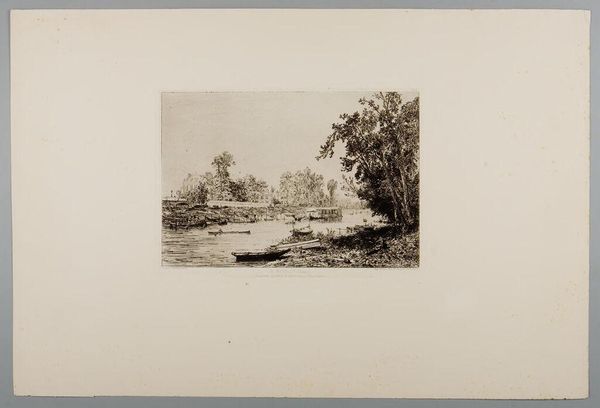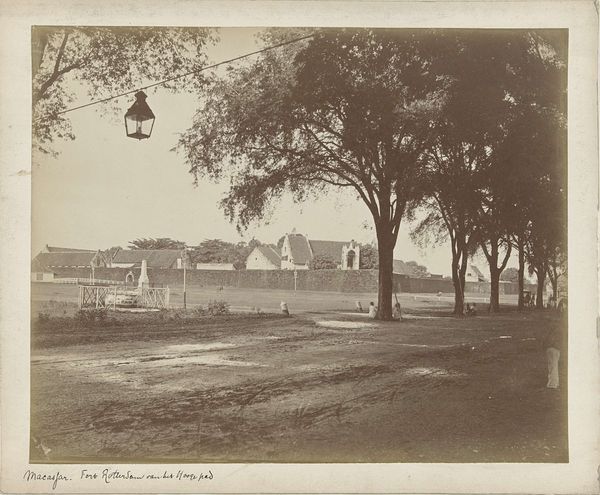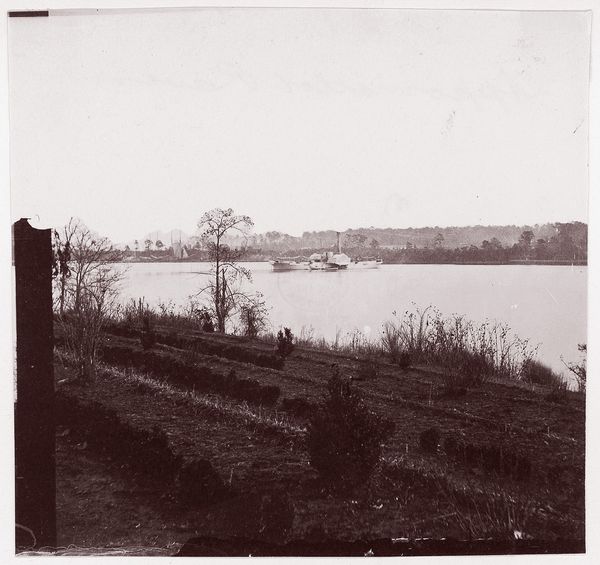![Untitled [village and river scene] by William J. Mullins](/_next/image?url=https%3A%2F%2Fd2w8kbdekdi1gv.cloudfront.net%2FeyJidWNrZXQiOiAiYXJ0ZXJhLWltYWdlcy1idWNrZXQiLCAia2V5IjogImFydHdvcmtzLzYyMWUxOGM5LWNlM2YtNDFlYS1iYjhlLTljNGQyZmRkN2EzZC82MjFlMThjOS1jZTNmLTQxZWEtYmI4ZS05YzRkMmZkZDdhM2RfZnVsbC5qcGciLCAiZWRpdHMiOiB7InJlc2l6ZSI6IHsid2lkdGgiOiAxOTIwLCAiaGVpZ2h0IjogMTkyMCwgImZpdCI6ICJpbnNpZGUifX19&w=1920&q=75)
photography, gelatin-silver-print
#
pictorialism
#
landscape
#
photography
#
gelatin-silver-print
Dimensions: 3 5/8 x 4 1/4 in. (9.21 x 10.8 cm) (image)4 1/8 x 4 3/4 in. (10.48 x 12.07 cm) (mount)
Copyright: No Copyright - United States
Editor: This gelatin silver print, titled "Untitled [village and river scene]", was created by William J. Mullins around 1900. The soft focus and monochromatic palette give it an ethereal quality. What strikes you most about its composition? Curator: I’m immediately drawn to the interplay of light and shadow and how the tonal range sculpts the space. Consider the structure; the horizontal layering, with the darker foreground balancing the lighter sky. Note how the photographer uses variations in texture, especially the soft, diffused effect achieved by the gelatin silver print, to unify the landscape. Editor: So, you’re focusing on the inherent formal properties of the image rather than what it represents? Curator: Precisely. The relationship between elements determines its meaning. Take for example how the line of the river guides your eye into the village. Are the buildings of significance, or do they provide compositional balance? Think about how each element contributes to a complete visual system. Editor: I see. So, rather than focusing on the 'what', it's the 'how' that creates the essence. Curator: Indeed. Semiotics would help reveal further the constructed meaning that the formal elements embody. Do you see how the lack of human presence contributes to a feeling of timelessness? Editor: That's fascinating! I was initially drawn to the tranquil scene itself but now I am compelled by the way the picture plane is constructed. Thanks for shifting my gaze. Curator: My pleasure. Understanding the fundamental formal strategies enhances how we interpret and respond to any work of art.
Comments
No comments
Be the first to comment and join the conversation on the ultimate creative platform.

